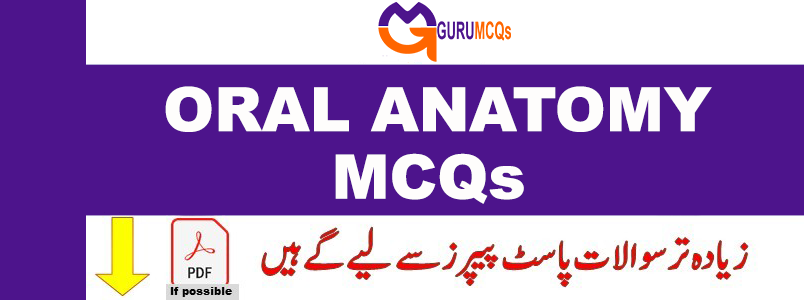
Gurumcqs.com offers a comprehensive collection of 2000+ basic and advanced oral anatomy MCQs, complete with answers and detailed explanations. This section is dedicated to covering all essential aspects of the oral anatomy subject, focusing on key topics related to the anatomy of the mouth and teeth. These include Basic Oral Anatomy, Calcification and Eruption of Teeth, Deciduous Dentition, Occlusion, Permanent Dentition, Physiologic Form of Tooth and Periodontium, Osseous Structures, TMJ, and more. The questions are carefully selected from reputable reference books on oral anatomy. These dental anatomy MCQs are valuable for interview preparation, entrance examinations, competitive exams, and certifications, catering to individuals with varying levels of experience, whether they are seasoned professionals, freshers, or students. Additionally, you can explore MCQs on medical topics on the platform.
181. The eruption age of maxillary permanent lateral incisor is________________?
A. 8-9 years
B. 6-7 years
C. 10-11 years
D. 8-9 months
182. Maxillary first molar has how many roots ?
A. 1 facial and 2 lingual
B. 1 lingual and 2 facial
C. 1 mesial and 2 buccal
D. 1 mesial and 1 distal
183. Average of length of maxillary cuspid is______________?
A. 26 mm
B. 33 mm
C. 21 mm
D. 18 mm
184. Which of the following permanent teeth is usually bilaterally symmetric when viewed labially and incissaly ______________?
A. Mandibular lateral incisor
B. Mandibular canine
C. Mandibular central incisor
D. Maxillary central incisor
185. The root trunk of permanent mandibular first molar buccally is______________?
A. Equal is length to the mesial bifurcation of the maxillary first molar
B. Equal is length to the buccal bifurcation of the maxillary first molar
C. equal in length to the crown
D. None of the above
186. The maxillary tooth exhibiting the greatest variation in root alignment is______________?
A. Central incisor
B. First premolar
C. Third molar
D. Second molar
187. Which of the following is true of permanent first molar’s occlusal surface_____________?
A. Maxillary molar has 2 major fossa, 2 minor fossa, 4 triangular ridges,1 oblique ridge and 5 grooves
B. Mandibular molar has 1 major fossa, 2 minor fossa, 5 triangular ridges and 4 grooves
C. Rhomboidal shape in maxillary molars and hexagonal shape in Mandibular molars
D. All of the above
188. Which of the following is true for permanent teeth________________?
A. Maxillary roots are inclined distally where as Mandibular roots are inclined mesially
B. Maxillary molars are buccally inclined and Mandibular molars are inclined lingually
C. Buccal cusps of lower and lingual cusps of upper are the functional cusp
D. All of the above
189. Permanent mandibular first molar is developed from ______ lobes?
A. 3
B. 4
C. 5
D. 6
190. The two major fossa of permanent maxillary first molar________________?
A. Central fossa and mesial fossa
B. Central and distal fossa
C. Mesial and distal tringular fossa
D. Distal fossa and distal tringaular fossa

Pingback: Oral Pathology MCQs with Answers for Exam Preparation - GURU MCQS